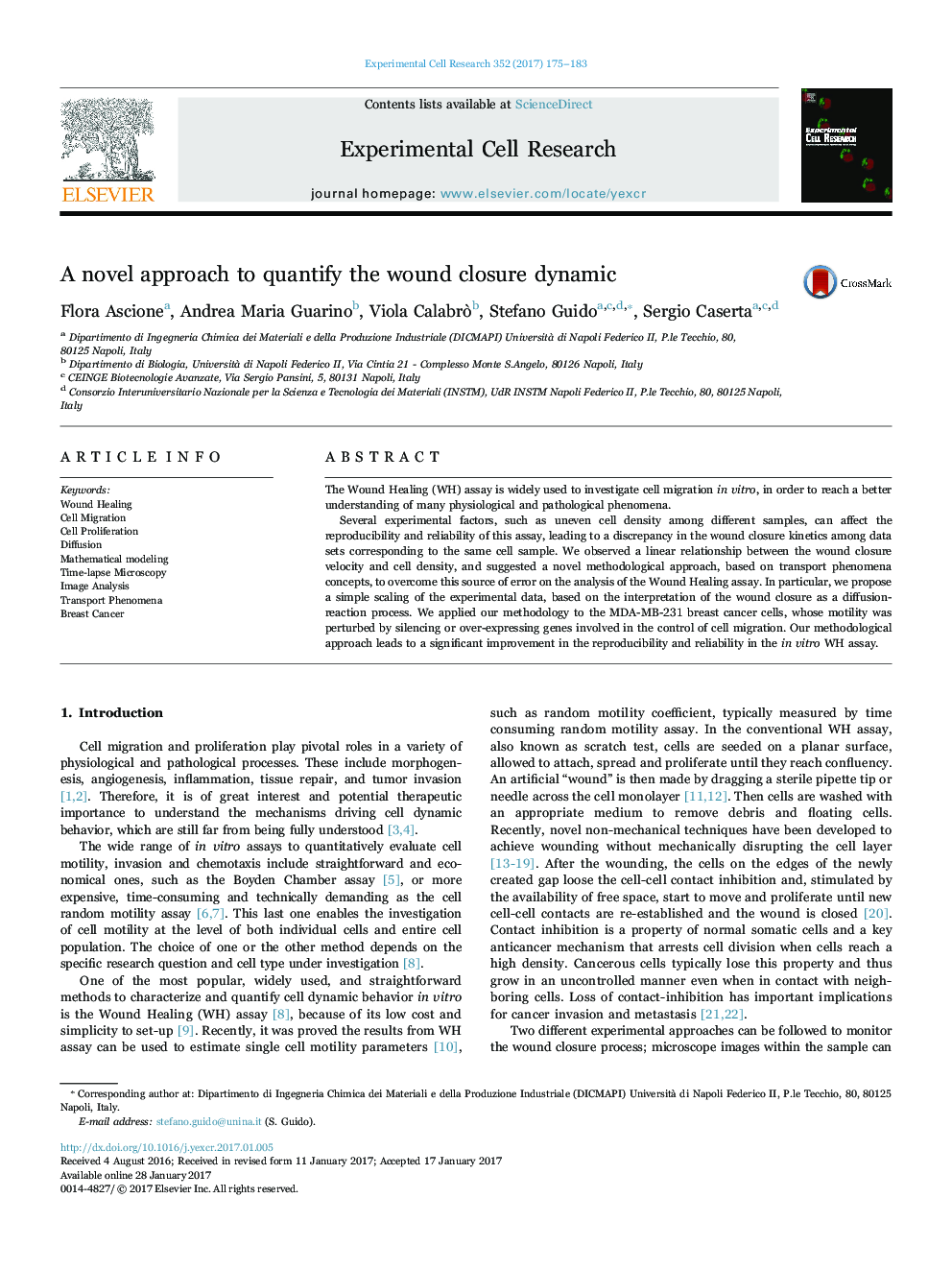| Article ID | Journal | Published Year | Pages | File Type |
|---|---|---|---|---|
| 5526997 | Experimental Cell Research | 2017 | 9 Pages |
â¢Cell density can affect the reproducibility and reliability of wound healing assays.â¢A linear relationship between the wound closure velocity and cell density is observed.â¢A novel methodology of analysis is proposed to account for cell density effect.â¢The motility of three populations of MDA-MB-231 breast cancer cells is compared.â¢YB-1 depleted cells show higher motility, âNp63α transfected cells have lower motility.
The Wound Healing (WH) assay is widely used to investigate cell migration in vitro, in order to reach a better understanding of many physiological and pathological phenomena.Several experimental factors, such as uneven cell density among different samples, can affect the reproducibility and reliability of this assay, leading to a discrepancy in the wound closure kinetics among data sets corresponding to the same cell sample. We observed a linear relationship between the wound closure velocity and cell density, and suggested a novel methodological approach, based on transport phenomena concepts, to overcome this source of error on the analysis of the Wound Healing assay. In particular, we propose a simple scaling of the experimental data, based on the interpretation of the wound closure as a diffusion-reaction process. We applied our methodology to the MDA-MB-231 breast cancer cells, whose motility was perturbed by silencing or over-expressing genes involved in the control of cell migration. Our methodological approach leads to a significant improvement in the reproducibility and reliability in the in vitro WH assay.
Graphical abstractDownload high-res image (243KB)Download full-size image
